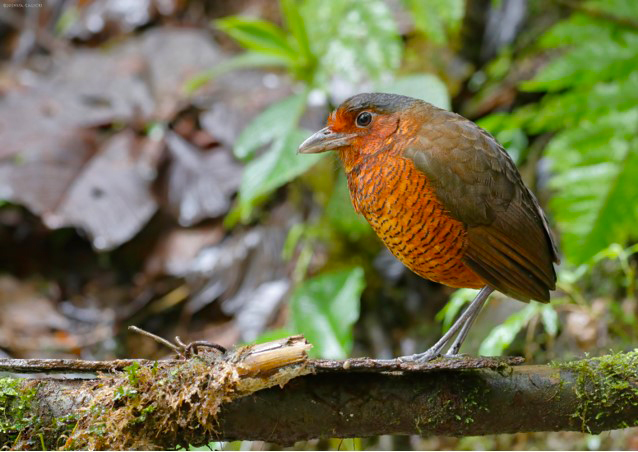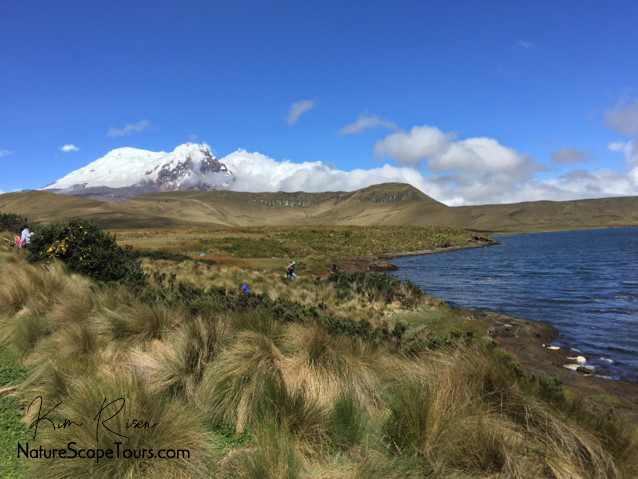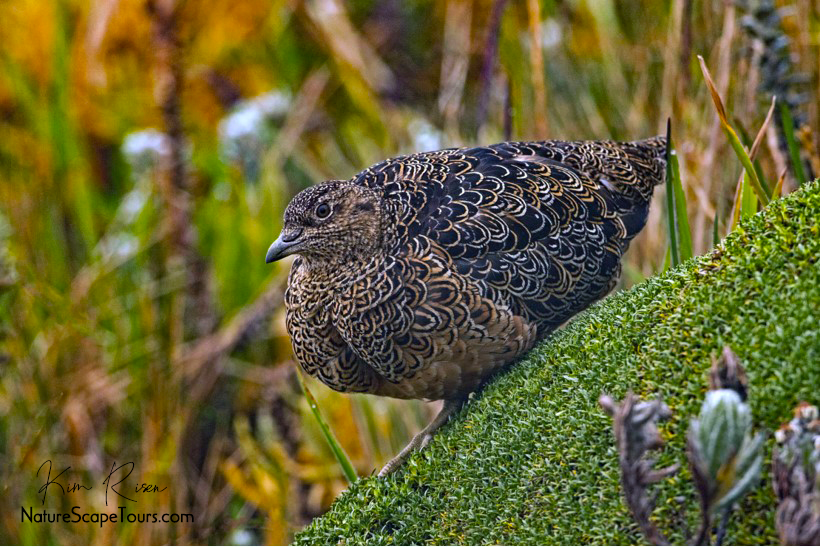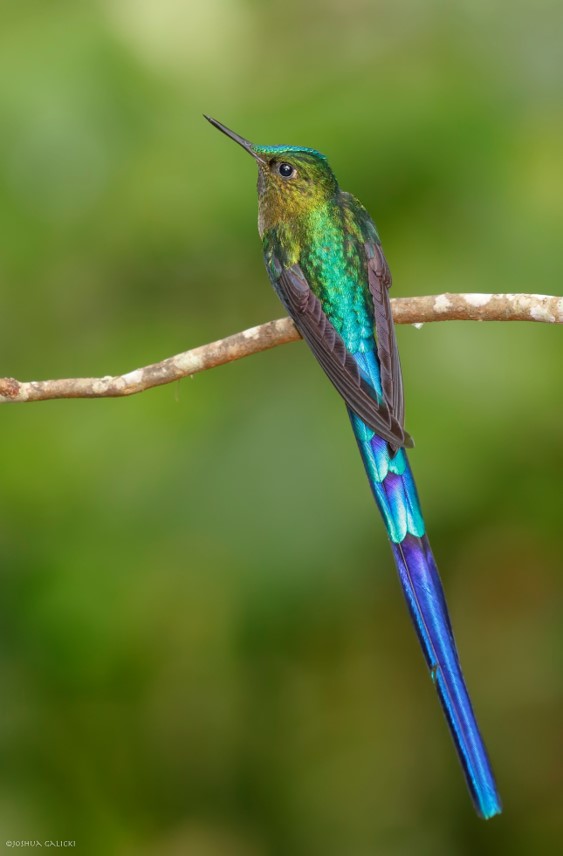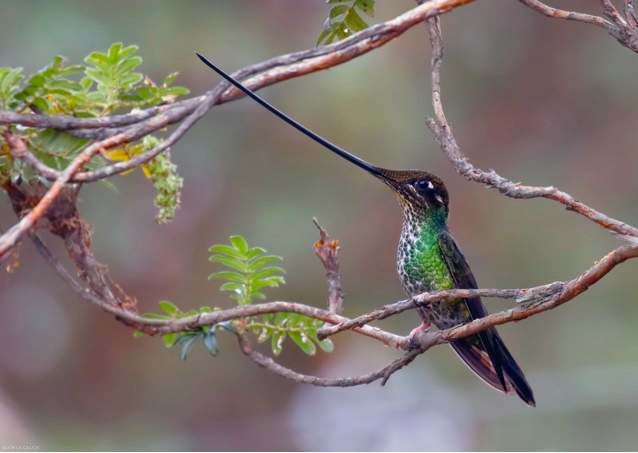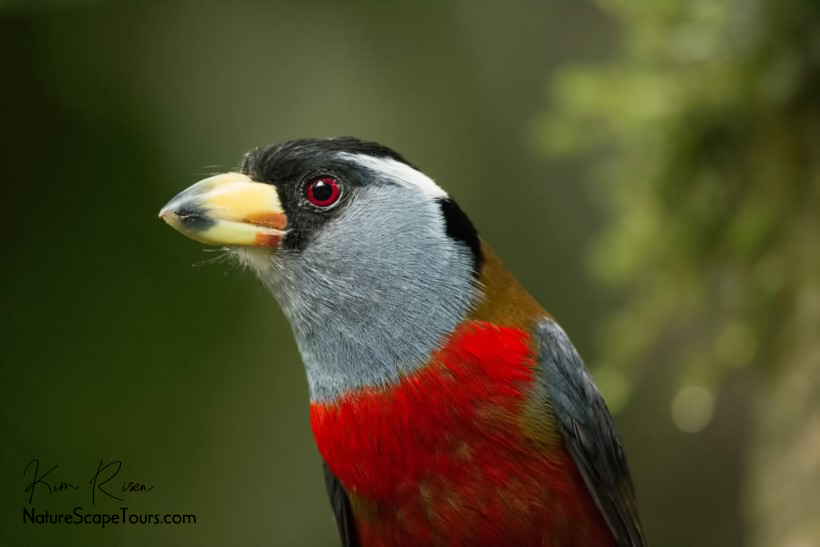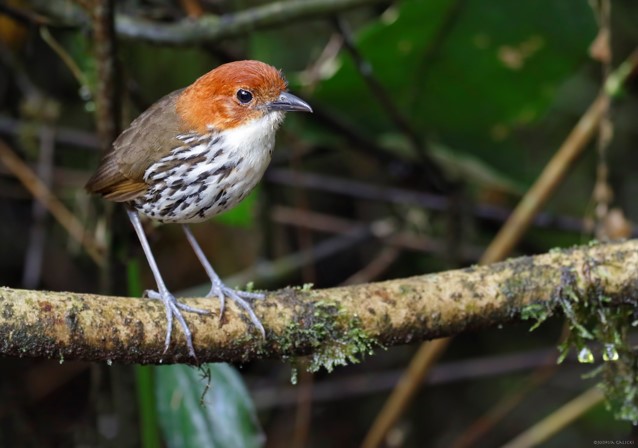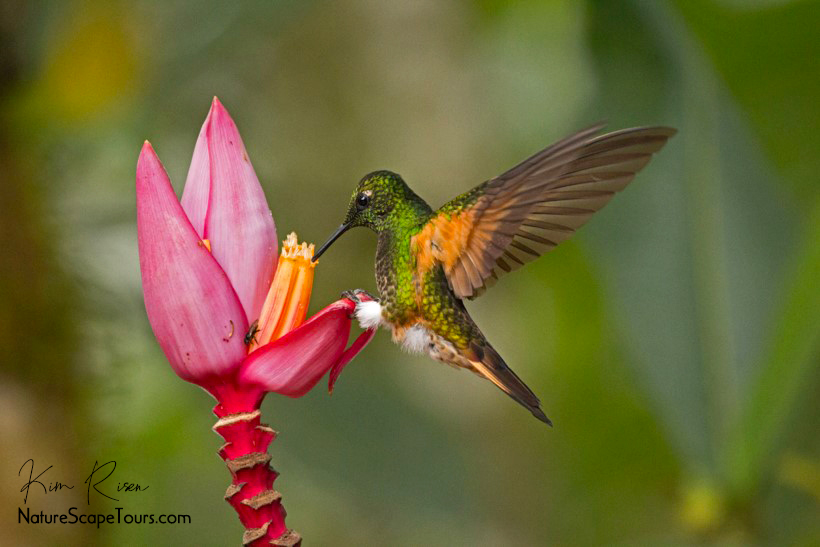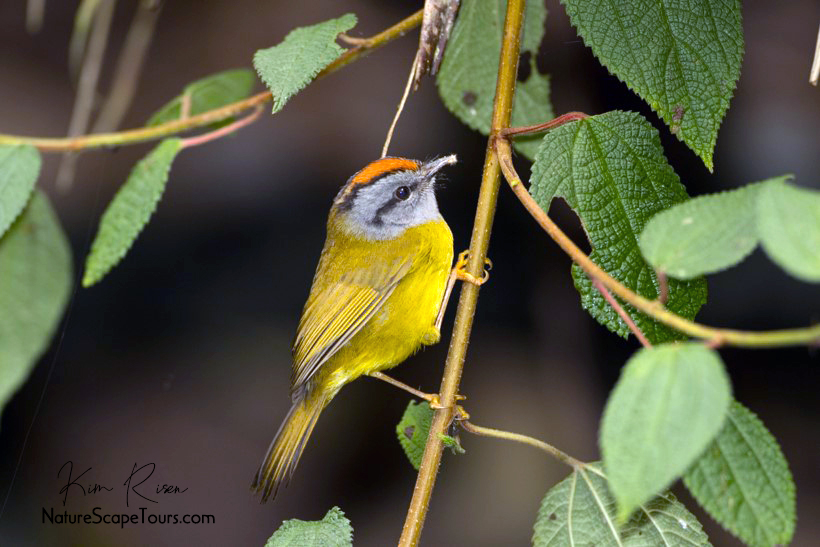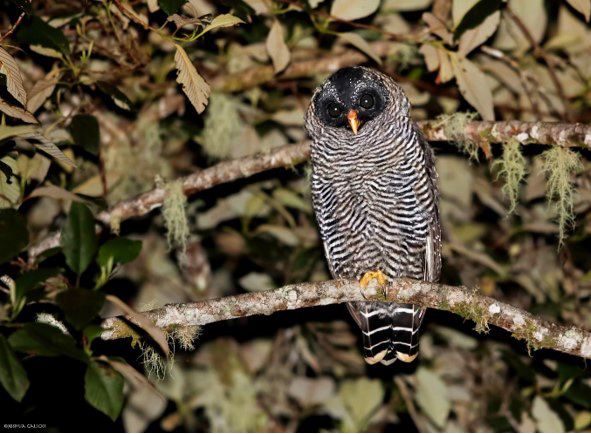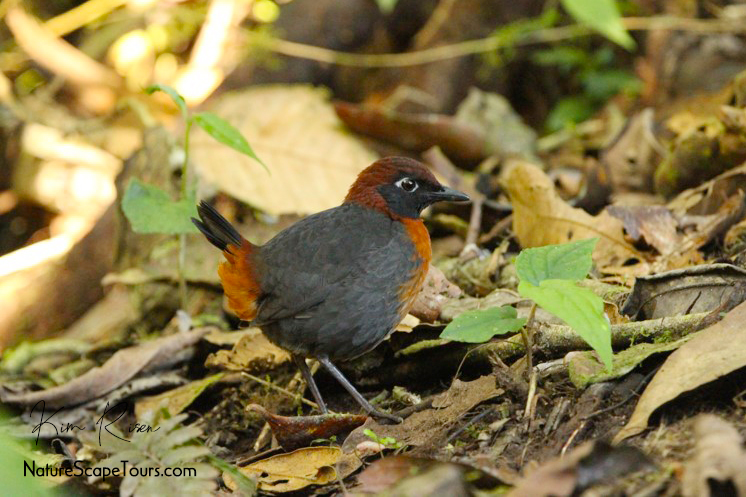Ecuador: Northern Andes Photo Workshop
Ecuador: Northern Andes Photo Workshop
| Registration |
December 2 – 15, 2019
Dramatic Andean highlands offer unforgettable backdrops to amazing people, plants, animals and birds. Rich cloud forests dripping with orchids, showy macaws flying over vast tracts of forest, troops of monkeys clambering through the treetops, swarms of frantic hummingbirds jockeying for position at feeders, gaudy flocks of tanagers, toucans and a never-ending list of “Oh my goodness!” moments become every day experiences. Such encounters cement Ecuador’s Andes Mountains as one of the world’s seven natural wonders.
“Ecuador’s unique geographical position, where the equator crosses the Andes, small size, stable government, and good infrastructure makes it the ideal destination for birders interested in South America, especially first-timers. Roads and lodges offer the birder rare access to two of the richest avifaunal areas in the world: the East Andean slope temperate-subtropical forest belt and west Amazonian tropical lowland rainforest, a habitat hat-trick full of toucans, antbirds and tanagers.”
This introduction by Nigel Wheatley in his book on birding in South America defines the basic attractions of birding in Ecuador. When you combine the basic details he describes with the birding to be experienced in these diverse habitats, a relaxed itinerary that takes full advantage of these amazing natural areas, the incredible number of tanagers, hummingbirds and antbirds we will see and a world class Amazonian Lodge, our Ecuador: Northern Andes tour may prove to be your adventure of a lifetime.
Mainland Ecuador supports one of the most diverse avifaunas on earth, with over 1600 species recorded. This, combined with its small size (only one half the size of the state of Texas), provides access to an incredibly diverse group of birds while maintaining a rather relaxed pace of travel. We devote our time to three of the more spectacular areas of Northern Ecuador: the West Andean slope and Choco habitats near Tandayapa and Mindo, high elevation east Andean slope below Papallacta at Guango Lodge and mid elevation and foothills of the Eastern Andes at Cabanas San Isidro.
Our introduction to the varied habitats that birding in Ecuador begins with a short journey to the breathtaking higher elevations of Volcan Antisana. Topping out at nearly 19,000 feet, Antisana’s crown of snow and ice is the greatest in Ecuador. The surrounding area offers access to polylepis woodlands, scrub covered slopes and high elevation paramo containing a number of plant and birds species we can expect to find only here during our visit. Polylepis woodlands harbors specialists like Blue-mantled Thornbill, Giant Conebill and Black-backed Bush-Tanager. Brushy areas amid grassy Paramo covered hillsides hold species as White-chinned Thistletail, Andean Tit-Spinetail, Many-striped Canastero, Andean Tapaculo, Paramo Pipit and Black and Glossy Flowerpiercers. We’ll stake out Chuquiragua bushes for Ecuadorian Hillstar and other hummingbirds to find include Great Saphirewing, Buff-winged Starfrontlet, Mountain Velvetbreast, Viridian Metaltail, Shining Sunbeam and Black-tailed Trainbearer, to name but a few! Tawny Antpitta is easily heard and, more importantly, seen while scattered wet areas, marshes and pools may have Andean Lapwing, Andean Snipe, Andean Teal or Andean Gull. The primary attraction during our visit will be Ecuador’s largest flying bird, Andean Condor. Antisana is THE single best location in the country for these impressive, primeval birds. Photographing the bizarre plants and wonderful birds of these unique, high-altitude habitats offer distraction aplenty during our visit.
Our travels then take us northwest of Quito to the Tandayapa Valley and a pair of lodges that cater to birders. Bellavista Lodge was the first of the valley’s lodges to begin offering birders good meals, good trails, and even better birding. The hummingbird feeders are attended by some spectacular species, and the trails offer some superb birding. We will be able to experience much of what makes the Tandayapa Valley such a special place to visit. Like Bellavista, the Tandayapa Bird Lodge is located in the rich forest habitats found near the villages of Tandayapa, Nono, and Mindo. The Nono-Mindo Road has become famous to birders throughout the world for the wide variety of birds that can be seen here. Tanagers, hummingbirds, trogons, toucans, and flycatchers are all well represented. We will search for such specialties of the region as Powerful Woodpecker, Plain-backed and Ochre-breasted Antpittas, Golden-winged and Club-winged Manakin, Golden-headed Quetzal, many hummingbirds, and tanagers, Choco Toucan, Plate-billed Mountain-Toucan, Toucan Barbet, Beautiful Jay, Yellow-collared Chlorophonia, Glistening-green, Gray-and-gold, and Moss-backed Tanagers, and the old road has been one of the better places to find the enigmatic Tanager Finch. The hummingbird gallery at Tandayapa Bird Lodge is the finest that I have every witnessed. Booted Raquet-tail, Fawn-breasted and Empress Brilliants, Violet-tailed Sylph, and Purple-bibbed Whitetip are all likely. At times the numbers of Booted Raquet-tails can be incredible. Frantic actions of up to 22 species! of hummingbirds are truly an amazing spectacle. Other nearby sites will provide as much excitement for group, and we are sure to wish we had more time to explore this amazing region of Ecuador.
We’ll then cross back across Quito, ascend Papallacta Pass and begin our descent down the East Andean slope to the private preserves and lodges owned by the Bustamante family. We’ll encounter a wide variety of hummingbirds and foraging mixed species flocks may hold dozens of species. Lifers and photo subjects will be everywhere you look! This east Andean slope temperate-subtropical forest has an almost overwhelming number of hummingbirds, tanagers and flycatchers. In addition, this bird-rich habitat holds large numbers of species that we expect to find only here during our travels. Birds possible during our descent include Black-and-chestnut Eagle, White-rumped Hawk, Sickle-winged Guan, Speckled Hummingbird, Collared Inca, Tyrian Metaltail, Long-tailed Sylph, Crested and Golden-headed Quetzals, Gray-breasted Mountain-Toucan, Pearled Treerunner, Tyrannine, Strong-billed, and Montane Woodcreepers, Chestnut-crowned, Chestnut-naped, and Slate-crowned Antpittas, Black-crested ad Russet-crowned Warblers, Bluish, Masked, and White-sided Flowerpiercers, and enough tanagers to sate even the most ravenous birder. Fawn-breasted, Saffron-crowned, Beryl-spangled, Blue-and-black, and Blue-and-yellow are a few of the “regular” tanagers. The “mountain” tanagers are particularly well represented with Lacrimose, Blue-winged, Hooded, Masked, Buff-breasted, and Black-chested Mountain-Tanager all possible. The hummingbird feeders at both Guango Lodge and Cabanas San Isidro hold a wide variety of hummingbirds, and spectacular species like Long-tailed Sylph, Booted Raquet-tail, and Collared Inca may make you gasp with their sudden, and dramatic, appearance at the feeders. As we explore the well maintained trails near the lodges, we will look for such specialties as Slate-crowned and White-bellied Antpittas, Barred Antthrush, Striped Treehunter, Black-chested and Green-and-black Fruiteaters in addition to the more common species. One trail leads to a Cock-of-the-rock lek, and, if we are lucky, we may see several of these incredibly bright birds glowing like orange embers in the shadows of the thick forest. Mammals are always to be enjoyed, and Spectacled Bear has been seen on the Cabanas San Isidro property. The wonderful meals prepared by the staff, comfortable cabins overlooking the valley, some intriguing night bird possibilities, very busy hummingbird feeders that may hold a number of Long-tailed Sylphs at the same time in addition to many other spectacular species, and easy access to a number of prime birding areas illustrate why San Isidro is considered one prime birding areas of the East Andean slope.
We’ll also explore the nearby Cordillera de Huacamayos (sometimes spelled Cordillera de Guacamayos) which holds a number of east slope specialties. Mustached, White-bellied and Slate-crowned Antpittas, Orange-eared, Golden-eared, Paradise, Saffron-crowned, Flame-faced, Rufous-crested, Vermilion, Black-capped, Blue-browed, and if we are really lucky, White-crowned Tanagers, to name just a few. Some of the more uncommon birds we’ll search for include Black-billed Mountain-Toucan, White-rimmed Brush-Finch, Masked Saltator and Bicolored Antvireo.
All too soon, our visit to this magical birding country must come to its end. Our adventures together are sure to keep us warm as we return to the colder temperatures of a northland winter. The scenery of the Andes from both the eastern and western slopes combined with the amazing adventure of our journey into Volcan Antisana’s heights give us a wonderful sampling of Northern Ecuador’s diverse habitats. Birds are at their peak diversity in the areas we have chosen to spend our time, and each person will have difficulty selecting their “favorite” bird sighting. Incredible numbers of such spectacular family groups as hummingbirds, jacamars, antbirds, cotingas, tanagers and even flycatchers. Yes! Flycatchers can be spectacular, and we look forward to showing you just how much!
Day One, December 2 – Arrival in Quito, Ecuador. You’ll be met at the airport by your NatureScape Tours guide and transfer to our hotel near the airport. Night Quito.
Day Two, December 3 – Volcan Antisana. After breakfast we’ll make the short drive to Volcan Antisana. Topping out at 18,891 feet, Volcan Antisana is a snow-covered marvel. We hope that arriving early in the day will allow you to photograph this stunning landmark in all its glory. We’ll enjoy a quick comfort stop along the way for coffee/hot chocolate and to photograph Giant Hummingbird. Over 9 inches in length the world’s largest hummingbird’s great size makes up for its rather drab plumage. Handsome Black-faced Ibis, split into Andean Ibis by some authorities, wander about paramo grasslands below Antisana’s impressive summit. Their buff, black and gray plumage add additional color to this stark landscape. We’ll make short hikes into areas where Chuquiragua are more common searching for enigmatic Ecuadorian Hillstar. Other targets include Silvery Grebe, Andean Gull, Carunculated Caracara, Black-winged Ground-Dove, Stout-billed and Chestnut-winged Concludes, Paramo Pipit and Plumbeous Sierra-Finch. We plan to enjoy our picnic lunch on the shores of Laguna de Mica where we might encounter a smattering of waterfowl like Andean Coot, Andean (Ruddy) Duck or Yellow-billed Pintail. We’ll return to our hotel in the late afternoon. Night Quito.
Day Three, December 4 – Yanacocha, Nono-Mindo Road, Tandayapa Valley. Yanacocha Reserve (also known as “Inca Ditch”) protects a high-altitude cloud forest situated about 10,500 feet above sea level on the slopes of Volcan Pichincha just west of Quito. The reserve consists of 964 hectares, consisting of elfin Polylepis forest that’s home to many higher altitude specialty birds. The reserve and its feeders are known primarily as an exceptional site for hummingbirds. Species we’re likely to turn up include impressive physical oddities like Sword-billed Hummingbird and Black-tailed Trainbearer. More common species include Buff-winged Starfrontlet, hefty Great Sapphirewings, Shining Sunbeam, Sapphire-vented and Golden-breasted Pufflegs, petite Tyrian Metaltail and decidedly less common Purple-backed Thornbill.
After our picnic lunch, we’ll follow the old Nono-Mindo Road downhill from the Yanacocha Reserve to the Tandayapa Valley. Our drive covers a variety of birding locations in the Choco Endemic Bio-region and the birding throughout the area is fantastic. Night Tandayapa Valley.
Day Four, December 5 – Tandayapa Valley. All day birding around our lodge and elsewhere in the Tandayapa Valley. Hummingbirds are abundant, and we’ll devote a large portion of our time here to insure everyone has time with our hummingbird set ups. Hummingbirds such as Tawny-bellied Hermit, Brown Violetear, Western and Andean Emeralds, Fawn-breasted Brilliant, Buff-tailed Coronet, Brown and Collared Incas, Purple-bibbed Whitetip, Booted Racket-tail, Violet-tailed Sylph and Purple-throated Woodstar, are likely to be photographed. Other notable species regularly found here include Golden-headed Quetzal, Toucan Barbet, Plate-billed Mountain-Toucan, Rusty-winged Barbtail, Streak-capped Treehunter, Long-tailed Antbird, Slaty Antwren, Scaled Antpitta, Ocellated Tapaculo, Golden-winged Manakin, Ecuadorian Thrush, Golden-rumped Euphonia, Black-capped Tanager and White-winged Brush-Finch. Beautiful Jay’s roam the valley, and we’ll search diligently for this difficult to see Choco Endemic. Night Tandayapa Valley.
Day Five, December 6 – Tandayapa Valley, Bellavista Lodge. After breakfast at our hotel we depart for the Andes Mountains located west of Quito as we drive to Bellavista Lodge at the head of the Tandayapa Valley. Bellavista is at the southern edge of the Choco/Andean hotspot of biodiversity that stretches from south western Colombia to northwestern Ecuador. Equally important, Bellavista is included within the Mindo International Important Bird Area. The first area so designated by Birdlife International in South America. We’ll have time to explore some of the trails near our lodge for Plate-billed Mountain-Toucan, Glossy Black Thrush, Andean Solitaire, perhaps an Ocellated Tapaculo and a number of tanagers and hummingbirds. Blue-winged Mountain Tanager and Grass-green Tanager are spectacular representatives of probable tanagers. Collared Inca and Gorgeted Sunangel are hummingbird counterparts. Night Bellavista Lodge.
Day Six, December 7 – Tandayapa Valley, Nono-Mindo Road, Mindo. Now, with the recent declaration of the road from Nono—Tandayapa—San Tadeo as the first Eco-route in Ecuador, more habitat is protected in the region for birds and wildlife. We’ll hike trails, little-travelled dirt roads and a number of paths that criss-cross the region. There’s always great birds to see, a mixed flock filled with tanagers, Choco endemics like Plate-billed Mountain-Toucan, Toucan Barbet or Tanager-Finch and always the sound of strange sounds begging to be identified! We GUARANTEE you will see hummingbirds! Night Bellavista Lodge.
Day Seven, December 8 – Mindo Lindo, Mindo Valley, Refugio Paz de las Aves. With the number of options to select from, our day is sure to be filled with exciting birds to photograph! Depending upon our successes of the previous two days, we may explore areas further afield. We’ll enjoy excursions to different elevations for different birds, or to other nearby reserves such as the recently opened and already famous Reserva Paz de las Aves, where we will spend the night. Wonders abound, and a Cock-of-the-Rock lek awaits our cameras, and up to five species of usually elusive antpittas can be seen at truly incredibly close quarters. An after dark search for nightbirds is scheduled. Night Paz de las Aves.
Day Eight, December 9 – Refugio Paz de las Aves, Papallacta Pass, Guango Lodge. Morning will find us listening to a cacophony of sound emanating from a dark tropical forest. A bizarre racket indicating an active Andean Cock-of-the-Rock lek is near. We’ll enjoy the visual and auditory treat courtesy of displaying Cock-of-the-Rock males until it’s light enough for our antpitta show to begin. Angel Paz, who pioneered this method, has “trained” antpittas to be fed by hand! We hope to photograph Yellow-breasted, Ochre-breasted, Chestnut-crowned and sometimes Moustached Antpittas. The star of the show is Maria, the refuge’s famous Giant Antpitta, who never fails to provide an exciting experience. Also possible are spectacular Choco endemics like Dark-backed Wood-Quail, Toucan Barbet and Orange-breasted Fruiteater.
After our late breakfast/brunch we’ll journey east, passing through Quito enroute to Papallacta Pass. A bit of birding along these higher elevations will occupy our time until just before dinner. We’ll look for Giant Conebill, Black-backed Bush-Tanager, many hummingbirds including Sword-billed and Giant Hummingbird, Shining Sunbeam and Green-tailed Trainbearer, Black-billed Shrike-Tyrant, Red-rumped Bush-Tyrant, Hooded, Buff-breasted and Scarlet-bellied Mountain-Tanagers and, if skies are clear, perhaps an Andean Condor, Carunculated Caracara or Rufous-bellied Seedsnipe near the summit.
We hope to arrive at our next lodge in time for some hummingbird photography before we eat the first of many superb meals at the charming Guango Lodge. Night Guango Lodge.
Day Nine, December 10 –Guango Lodge. Dense gardens around the lodge are excellent for birding in early morning and the feeders attract a number of interesting hummingbirds. Specialties for which we’ll search include Andean Guan, Turquoise and Inca Jays, White-banded Tyrannulet, Slaty-backed and Rufous-breasted Chat-Tyrants, Capped Conebill, Gray-hooded Bush Tanager, Black-capped and Black-eared Hemispingus, Blue-and-black Tanager, the curious Plushcap and Slaty Brush-Finch.
Taking advantage of the lodge’s numerous hummingbird feeders, we’ll have multiple hummingbird setups, both with and without flash. Expected are Speckled Hummingbird, Chestnut-breasted and Buff-tailed Coronets, Buff-winged Starfrontlet, Sword-billed Hummingbird, Tourmaline and Flame-throated Sunangels, Tyrian Metaltail, Mountain Velvetbreast, White-bellied and Gorgeted Woodstars and the colorfully dramatic Long-tailed Sylph. Additionally, flowerpiercers and tanagers are often found on the feeders in small numbers.
Birding throughout the balance of the day will have us exploring a number of very different habitats. From paramo and Polylepis forest above Papallacta through premontane cloud forest below the village. Night Guango Lodge.
Day Ten, December 11 – Guango Lodge. We’ll have time for a bit of photography as daylight breaks. And, after a delicious breakfast, we’ll explore trails near our lodge looking for more feeding flocks and the frenzy that comes with such sightings. The rushing river running behind the lodge holds colorful and engaging Torrent Ducks along with Torrent Tyrannulet and White-capped Dipper. We’ll arrange our hummingbird feeder gallery to maximize photo opportunities. And, with the variety of species available, it’s sure to become a popular location for some photographers in our group. With a leisurely pace for the entire day we will be able to relax and just absorb the spectacular surroundings and birdlife.
Concentrating our birding & photography efforts in the diverse tropical forests below Papallacta, we’ll make a special effort to find Sword-billed Hummingbird—in the unlikely event we failed to find one yesterday. Loads of tanagers, hummingbirds and flycatchers should make their appearances today. On a recent visit, we found a Mountain Avocetbill on its nest and a dozen species of cooperative hummingbirds. We hope to find several of the amazing-to-experience and justifiably famous feeding flocks from this region of the neotropics. Such flocks here may hold more than ten species of tanagers in a single flock, and often, more than a dozen additional species of birds all trying to capture your attention.
We’ll enjoy lunch back at Guango Lodge, once again enjoying their hummingbird gallery and bird feeders during our midday break. Night Guango Lodge.
Day Eleven, December 12 – Guango Lodge to Cabanas San Isidro. Our final morning to enjoy the hummingbird show, photograph birds along the river or trails and revel in the familial comfort of Guango Lodge before we must depart. Our drive isn’t a long one, and we should arrive at Cabanas San Isidro with plenty of time to enjoy their hummingbird feeders as we prepare our photography setups and any number of trails centered upon the lodge property. Options abound, and after we get settled into our comfortable cabins we’ll take advantage of all this lovely facility has to offer. Dusk should find us doing some night birding for owls, Rufous-bellied Nighthawk, Andean Potoo and the famous “San Isidro Mystery Owl”. Meals at San Isidro are a treat, and our first dinner will show you why. Simply delicious! Night Cabanas San Isidro.
Day Twelve, December 13 – Cabanas San Isidro. Cabanas San Isidro consists of a 1300 hectare private reserve in the species rich East Andean slope. Trails radiating throughout the reserve offer excellent birding and photographic opportunities and hummingbird feeders, an antpitta feeding station and another Andean Cock-of-the-rock lek await us.
At first light an interesting collection of birds can be found picking off moths and other insects attracted to pathway lighting during the night. Trogons, jays, toucanets, flycatchers and tanagers can be photographed as the birds search for insects along the reserve’s paths. Birds commonly found around the cabins and lodge clearing include Masked Trogon, Powerful Woodpecker, Rufous-crowned Tody-Flycatcher, Smoky Bush-Tyrant, Green-and-black Fruiteater, Black-billed Peppershrike and a nice collection of tanagers.
Our hummingbird setups are sure to be popular, as the well established feeders regularly hold Tawny-bellied Hermit, Sparkling Violetear, Fawn-breasted Brilliant, Buff-tailed and Chestnut-breasted Coronets, Bronzy Inca and Long-tailed Sylph among others.
Walking roadways and trails may give us Golden-headed and Crested Quetzals, bizarre sounding Sickle-winged Guans, Highland Motmot, Black-billed Mountain-Toucan, Long-tailed Antbird, Barred Antthrush, Variegated Bristle-Tyrant and Black-chested Fruiteater. Another evening search for owls is possible. Night Cabanas San Isidro.
Day Thirteen, December 14 – Cabanas San Isidro, Guacamayos Ridge. Fruiteaters, hummingbirds, tanagers, mountain tanagers and flycatchers offer plenty to see/photograph while rare specialties like White-rimmed Brush-Finch are hoped for targets. Box lunch at the ridge before we return to the cabins and an afternoon siesta, photo session or walk to explore more of the preserves trails. After dinner we have another night to photograph night birds like Rufous-banded and Mottled Owls, Rufous-bellied Nighthawk and Andean Potoo. Night Cabanas San Isidro.
Day Fourteen, December 15 – Cabanas San Isidro to Quito. They say that all good things must come to an end and, unfortunately, we’ll have to depart Cabanas San Isidro after breakfast. Fortunately, we have one final morning to enjoy this incredibly rich area with our cameras and binoculars. One last session with those amazing hummingbirds, a last antpitta outing or a final search for tanagers, will occupy our time before we must load and leave.
Arriving back into Quito, we’ll enjoy a farewell dinner at a local restaurant as we recap our South American adventures. We’ll return to our hotel with ample time to repack, prepare or rest before your transfer to the airport and your flights home. For those departing on flights near midnight you’ll transfer about three hours prior to departure. If you’re on a morning flight the following day, your transfer will be at your desired time prior to departure. Regardless of your lift-off time, everyone will travel homeward with memories of our incredible birding and photography adventure amid Ecuador’s legendary Andes!
NOTE: Many flights returning to the US depart shortly after midnight. Remember, as you plan your return trip to insure that if you are departing this evening, your flight needs to be in the early morning hours of December 16, 2019. Check with us if you have questions.
If your flight departs in the later morning hours of December 16, 2019, we can make arrangements for your hotel stay. Again, check with us if you have any questions.
EXTRA LOGISTICAL SERVICES: Should you wish NatureScape Tours to put arrangements in place for an early arrival prior to the tour’s start or extend your stay after the tour’s conclusion, please contact our office prior to your tour’s scheduled departure date as far in advance as possible. Such arrangements could range from a night or two at our first hotel of the tour to an extended stay of a week or more at tour’s conclusion. Our staff can easily make seamless arrangements for you that could include transfers, hotel rooms, transportation and excursions. We can often provide these services at our contracted group rates — as long as we receive your request far enough in advance.
All amounts are quoted in United States dollars and are based upon double occupancy.
TOUR COST: 6 Persons – $4250 Single Supplement – $655.00
The cost of this trip, based on a minimum group size of SIX, is $4250 from Quito. If the final group is smaller than six participants, a small group supplement may be charged. All costs are quoted in US dollars and are based on double occupancy.
COST INCLUDES: Accommodations based on two persons sharing a two bedded room. We select good hotels convenient to our birding destinations. For single rooms a single supplement will be charged. We try to supply roommates when possible, but we can’t always find one. If we cannot find you a roommate, you will be charged the added cost of single accommodations. Meals as outlined in the group itinerary from breakfast on Day Two to Lunch on Day Fourteen. All transportation. Expert guide service, including native local guides at times. All transportation, this may be by private or chartered car, station wagon, van or bus, canoe, boat or ferry. Taxes & Local Fees. All group admissions and park entry fees. Shared use of high-speed, multiple flash hummingbird and photo set-ups are included in the tour price.
COST DOES NOT INCLUDE: Not included are international transportation to or from Quito, laundry, personal tips, alcoholic drinks, soft drinks, juices, mineral waters and other beverages away from meals, room service charges, souvenirs, insurance of any kind, telephone calls and use of TV not included in the room rate and luggage or overweight baggage fees.
MEAL COSTS: All meals, from breakfast on Day Two to Lunch on Day Fourteen ARE included in the cost of this tour.
TIPS: All expected gratuities encountered during your tour (restaurant wait staff, luggage porters, bus drivers and local guides) is included in the cost of your tour. However, if you feel your NatureScape Tours leader, local guide or lodge personnel have given you exceptional service, it is perfectly suitable for you to bestow any gratuity you elect. We strongly stress that such tips are completely optional and solely at your discretion.
UNANTICIPATED COSTS: Rarely we have had unexpected costs during a tour. Cancellation of air flights or trains have required staying in hotels for extra nights, hiring vehicles for extra excursions and other services. At times schedule changes or route changes have been necessary. If such changes are proposed and accepted by participants, it is with the understanding that they accept the obligation to pay any extra unanticipated costs.
On all of our tours, participants are responsible for any extra expenses incurred from deviations to our scheduled tour itinerary which result from events out of our control (additional hotel nights, transfers and transportation by air, water or ground). This could be a weather related event, natural disaster, the result of flight or rail cancellations, labor strikes, acts of God and the like.
We advise you to buy trip cancellation insurance which may reimburse you any unrecovered payments from cancellations or additional payments from any necessary tour deviations. In Ecuador this typically refers to WEATHER related delays (i.e. road closures, flash floods or landslides) but could be a result of flight cancellations, labor strikes, acts of God or the like.
MEDICAL & TRAVEL INSURANCE: The loss of your belongings while traveling is a concern no matter where or when you travel. Most optical equipment used by birders is valuable and expensive. By insuring that your insurance is going to cover your losses in the unlikely event of a theft you will be providing yourself some inexpensive peace of mind. Likewise, you should insure that your medical insurance provides you with adequate coverage when traveling outside of your home state. You will be responsible for all of your incurred medical expenses should you become ill. Some participants have lost substantial sums of money when illness or other circumstances prevented them from departing for a tour or completing a tour as scheduled. Therefore, we advise you to consider trip cancellation insurance which may reimburse the entire unrecovered amount if it becomes necessary for you to cancel or depart unexpectedly. We can’t offer refunds for unused portions of a tour unless agreed to before the tour and trip cancellation insurance may reimburse you your losses if you must leave a tour early for illness or other valid reason.
DATE OF COST QUOTATION: June 15, 2019
We can only quote current costs. Tour planning begins more than a year before the tour runs. While we try to arrive at our best estimates, we can’t predict fluctuation of currency exchange rates, increases in hotel or vehicle rates outside of our negotiated contracts, etc. Therefore, we reserve the right to increase the tour cost when there are justifiable reasons. However, we make a sincere effort to arrive at the closest possible estimate and have even absorbed small increases at times to avoid raising tour costs to participants. Many of our suppliers have gone to surcharges in their contracts with NatureScape Tours as a means to offset the unpredictability’s inherent in such long distance planning. The two most prevalent are:
FUEL: In today’s volatile oil market, it’s difficult, nay, impossible, to accurately project fuel costs into the distant future. Prices for our tours are based upon fuel rates reasonably expected at the time of your tour’s start. While NatureScape Tours does everything possible to maintain the quoted price of your tour, with a dramatic shift in fuel prices, it may be necessary to charge a fuel surcharge. If such a surcharge is levied, every effort will be made to minimize the cost passed along to you. In almost all cases, these are additional charges being assessed NatureScape Tours by our service suppliers and vendors who have exercised their right, under their contracts with NatureScape Tours, to increase prices caused by substantial changes in the cost of fuel.
EXCHANGE RATES: As with oil, it’s impossible, to accurately project foreign currency exchange rates into the distant future. Prices for our tours are based upon the rate of exchange reasonably expected at the time of your tour’s start. While NatureScape Tours does everything possible to maintain the quoted price of your tour, with a dramatic shift in exchange rates, it may be necessary to charge a surcharge. If such a surcharge is levied, every effort will be made to minimize the cost passed along to you. In almost all cases, these are additional charges being assessed NatureScape Tours by our service suppliers and vendors who have exercised their right, under their contracts with NatureScape Tours, to increase prices caused by substantial changes in foreign currency exchange rates.
PLEASE NOTE: In more than 20 years of running tours, we’ve NEVER had to assess an additional charge or surcharge to a client. We feel strongly that our staff’s careful planning and negotiation will continue our unblemished record.
REGISTRATION: THIS TRIP IS STRICTLY LIMITED TO A MAXIMUM OF EIGHT PARTICIPANTS! A non-refundable deposit of $495.00 and completed registration form are required to confirm space. Without these, no one is considered registered. Registrations are taken on a first-come first-served basis with priority based on the postmark date.
TOUR CANCELLATION: Our cancellation policy is generous. We negotiate with each of our service providers and have contracted payment dates directly with them. Accordingly, all payments received by us, less your non-refundable deposit of $495.00, will be returned to you in full if we are notified in writing at least 121 days prior to tour departure date.
Due to contractual obligations with our hotels, trains, bus and van rentals, boat charters and other costs where we have contracted payment dates there are no refunds for cancellations within 120 days prior to tour departure.
Payments made on your behalf to purchase nonrefundable but changeable tickets may result in the loss of that cost should you decide to cancel. In some cases, if you can find a replacement to take your spot on your tour, we can change the name on such tickets at a lower cost than purchasing a new ticket. In these cases, the difference could be refunded to you provided enough notice has been given.
Some participants have lost substantial sums when illness or other circumstances prevented them from taking a tour or forced them to depart a tour early. We can’t offer refunds for unused portions of a tour unless agreed to before the tour. Trip cancellation insurance may reimburse you for your losses if you must leave a tour early for illness or other valid reason.
Therefore, we strongly advise you to buy trip cancellation insurance which may reimburse you the entire unrecovered amount if it becomes necessary for you to cancel, shorten or change your participation on your tour.
UNUSED PORTIONS OF A TOUR: We can’t offer refunds for unused portions of a tour unless agreed to before the tour. If you fail to show up to meet the tour or leave the tour early, regardless of the reason, we are under no obligation to provide any refund. Trip cancellation insurance may reimburse losses if you must cancel or leave a tour early for illness or other valid reason. Such insurance can be purchased through your local travel agent, AAA, CAA or AARP.
COMPLETION OF PAYMENT Foreign travel agents, hotels, boat operators etc. require advance payment. We can offer better rates on our tours because of our negotiated and contracted payment dates. Your cooperation with prompt payment helps avoid problems with your arrangements. For this tour we require final payment to be received in our office by September 1, 2019.
| Registration |
